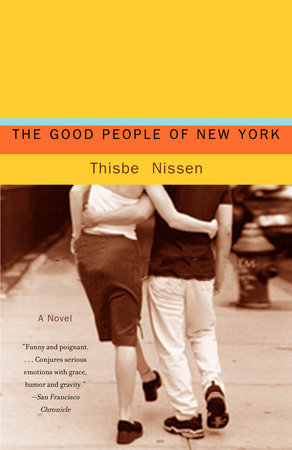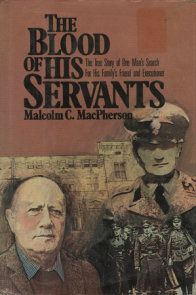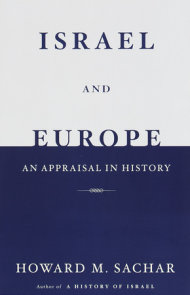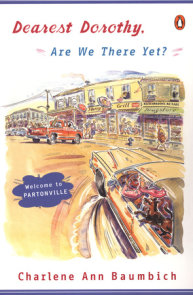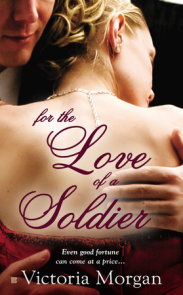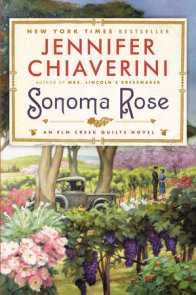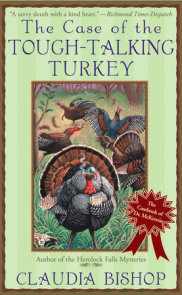READERS GUIDE
“A voice that is by turns funny and poignant . . . conjures serious emotions with grace, humor and gravity.” —SAN FRANCISCO CHRONICLEThe introduction, discussion questions, suggested reading list, and author biography that follow are intended to enhance your group’s discussion of The Good People of New York, Thisbe Nissen’s sparkling debut novel.
Introduction
It’s love with an edge in this sharp tale of would-be urban sophisticates who embark on a mismatched marriage and have a daughter. As the story unfolds, Nissen depicts the relationships and conversations of the well-meaning but slightly neurotic inhabitants of New York with uncanny acumen.Edwin Anderson and Roz Rosenzweig meet outside Fran Kornblauser’s Manhattan apartment in 1970—he is a scrubbed, polite Nebraskan, fresh out of law school and eager to practice civil rights law, while she is a cynical, sexily dressed Jewish legal secretary. After a brief, unlikely courtship, they marry. The newlyweds’ first visits to their respective in-laws in Omaha, Nebraska, and Yonkers, New York, only serve to punctuate the differences in their backgrounds. Oblivious, the happy couple plunges into parenthood, but the birth of their daughter Miranda and the passage of time takes its toll on their marriage. Miranda’s life epitomizes fast-paced New York City. Spunky and savvy, burying her youth and vulnerability under a mask of sarcasm, Miranda is determined to grow up quickly despite Roz’s desire to keep her young. New people—native New Yorkers, and a few non-natives, too—come in and out of Roz’s, Miranda’s, and Edwin’s lives. As the 1970s eventually give way to the 1990s, families change, households reconfigure, and everyone grows a little older and, perhaps, a little wiser.
Questions and Topics for Discussion
1. Are the characters portrayed in the novel actually “good people,” and, if so, what makes them “good”? Or, is the title meant to be sarcastic? How so?
2. Fran tells Roz on her first meeting with Edwin, “Things are hardly as they appear” [p. 5]. Where else in Roz’s life does her perception conflict with reality? What does this say about Roz’s character?
3. Why does Roz and Edwin’s marriage end? How does Miranda’s birth change them as individuals? Does their new daughter alter their marriage or merely accentuate differences that were already there? How does the author foreshadow the fate of the marriage long before Roz and Edwin themselves experience it?
4. Is Miranda and Roz’s mother-daughter relationship a realistic one? Roz had intended to be “the fabulous mom-who’s-more-like-a-friend-than-a-mom mom” to Miranda, not a “worrier” like her own mother, Adele [p. 67]. Does Roz live up to her expectations of motherhood? How does Roz’s perception of herself as a mother differ from Miranda’s view of her mother [see pp. 105 and 246]? How accurate is Darrin’s perception of their relationship [p. 237]?
5. What does it mean that Edwin does not have “one iota of New York savvy” [p. 7]? Was Edwin doomed from the beginning to return to Nebraska, “where the waves of grain were amber, the plains fruited, and the girls as simple and blond as sunflowers” [p. 10]? How are the native New Yorkers in the novel more “savvy”? How might Wing and Darrin, also “non-natives,” rank in terms of on Roz’s scale of savviness?
6. Aside from the references to public transportation [pp. 35 and 136], the tragedy of moving from Manhattan to Brooklyn [p. 137], the Metropolitan Museum of Art [p. 9], Zabar’s [p. 66], Bloomingdale’s [p. 133], and other New York City landmarks, what makes The Good People of New York a quintessentially New York novel? How might a non-New Yorker and a New Yorker read this book differently?
7. For which character do you feel the most sympathy? Which characters do not evoke as much compassion and why? How is the author simultaneously sympathetic and sarcastic toward her characters, and how does it affect your ability to relate to them? Is this more true or less true of the secondary characters, such as Ben, Alex, and Shaunna?
8. When Miranda tries to think of Spencer, why can she remember only the night her father left [p. 112]? Is Spencer a father figure to Miranda? What does he teach her?
9. How does Roz’s religion define her? How are Roz’s and Mona’s Judaism manifested differently? Is religion at the core of Roz’s identity? Is it a contributing factor to the failure of her marriage, or is it irrelevant? After Edwin and Roz marry, the author no longer mentions the religion of the people in Roz’s, Edwin’s, and Miranda’s lives. Why not?
10. The imagery of motion permeates The Good People of New York. For example, Roz imagines her courtship with Edwin in terms of arriving at a destination and establishing roots [pp. 11–12] and Miranda associates the paths her parents’ lives have taken with driving [p. 194]. What mood do these travel images and metaphors create? What do they convey about life in New York City? How is the implied sense of perpetual motion, the need to get from one place to another, reflected in the characters?
11. How do the letters from camp in Chapter 7 help advance the plot [pp. 75–90]? How does this chapter hint at the changes to come in Miranda’s family? Where else does Nissen use foreshadowing?
12. Compare the friendships in the book to the relationships among family members. Does one type of relationship seem to take priority over another? How does Ben and Miranda’s relationship demonstrate the way in which lines between family relationships and friends are often blurred? Does the novel accurately reflect how some people drift in and out of our lives and some people stay constant?
13. The novel spans a period of time from just before Miranda’s birth until her eighteenth birthday. Is this primarily Miranda’s story or Roz’s? Does the narrative voice shift successfully from Roz to Miranda? Is either one dominant? Does The Good People of New York fit squarely into the coming-of-age genre, and if so, whose coming-of-age does it portray?
14. Nissen often ends chapters before informing the reader of whether or not an event occurs and later fills in the plot (for example, the death of Adele [Chapter 5], the dissolution of Edwin’s and Roz’s marriage [Chapter 8], and Miranda’s rendezvous with Jeremy [Chapter 10]). How does omitting the description of events when they actually occur affect the development of the novel?
15. How is Roz like Adele [p. 67]? What physical characteristics and personality traits does Miranda inherit from her mother and father?
16. Nissen often includes cultural references to timely popular fads, for example, Roz’s return to law school [p. 65], the “latchkey kid” [p. 91], Obsession perfume [p. 133], the television show Moonlighting [p. 220], and sushi [p. 236]. Do these references successfully convey how society changed from the 1970s through the 1990s, or do they date the novel? How might they affect the reader who did not live through these times or is not familiar with these popular trends? How else does the author convey the changing times?
17. Miranda thinks, “That’s just the way things go: you never get to the place you once looked up to because once you’re there you’re no longer looking up and you realize that maybe it only really existed if you caught it on an angle from below” [p. 269]. How is this sentiment echoed throughout the novel?









